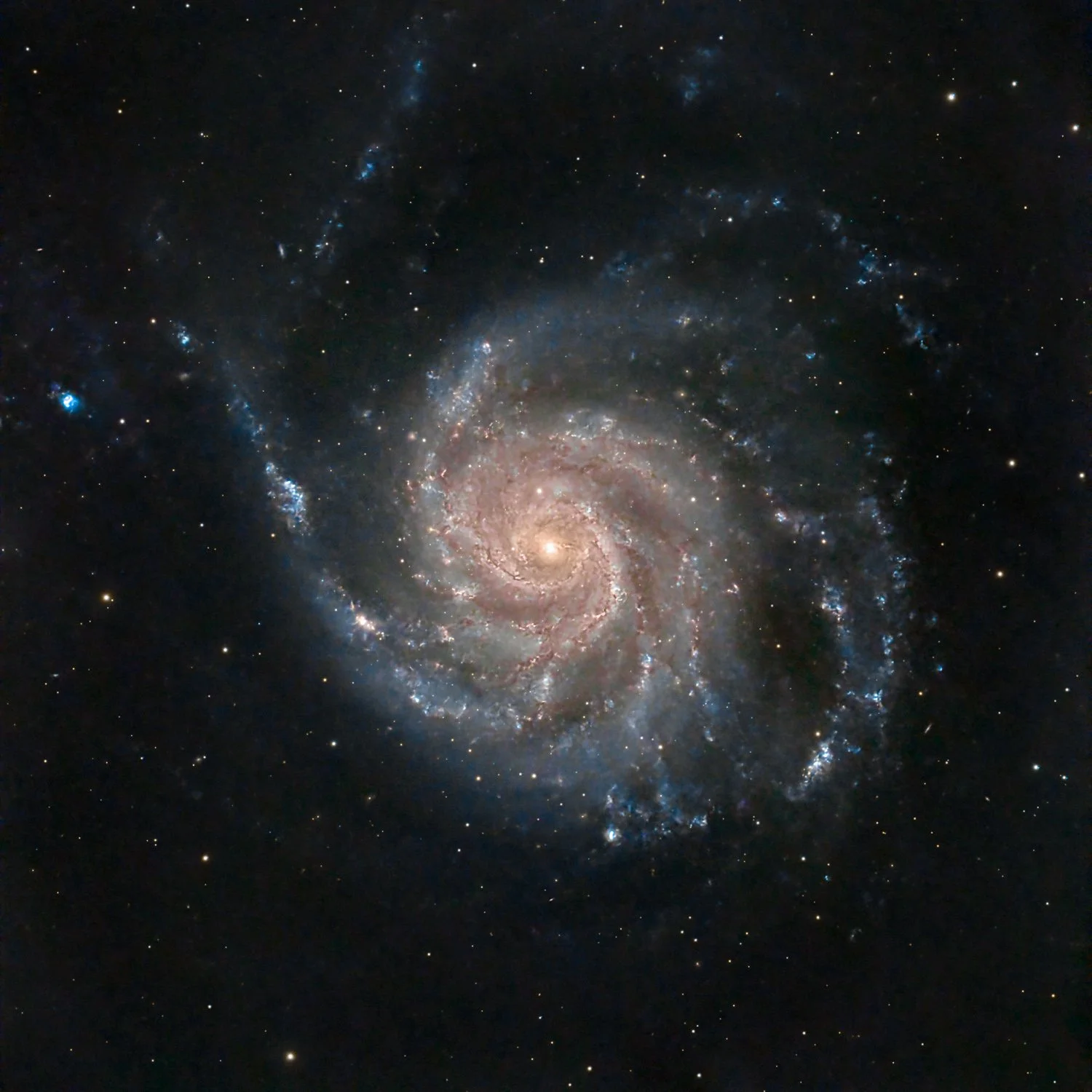M101: The Pinwheel Galaxy
M101, also known as the Pinwheel Galaxy, is a stunning spiral galaxy located approximately 21 million light-years away in the constellation Ursa Major. Named for its striking appearance resembling a pinwheel, M101 is a favorite among astronomers and stargazers alike. Its beautiful spiral arms, dust lanes, and countless stars make it a captivating sight in the night sky.
M101 The Pinwheel Galaxy © Robert G. Lyons
Spanning about 170,000 light-years in diameter, M101 is roughly twice the size of our own Milky Way galaxy. It hosts a rich population of young blue stars, nebulae, and star-forming regions, indicating ongoing stellar birth within its spiral arms. The galaxy also contains older, yellowish stars in its central bulge, where its gravitational forces are strongest.
M101 has been extensively studied due to its proximity and clarity, offering valuable insights into the dynamics and evolution of spiral galaxies. Its relatively face-on orientation to Earth allows astronomers to observe its structure with great detail, making it an important target for research and observation.
The Celestron Edge HD 8” © Robert G. Lyons
To make this image I used my Celestron Edge HD 8” telescope with the Celestron 0.7x reducer. The reducer results in a focal length of 1470mm and an f7 focal ratio, perfect for photographing distant galaxies! I used the ASI533MC Pro camera instead of my mono version because it is simply more convenient and requires less filters and the accompanying calibration frames. I shoot from a Bortle 9 zone, often in moonlight, so light pollution is as bad as it gets. To overcome this challenge I use an Antlia Quadband Light Pollution filter, which allows limited light in the red, green, and blue channels, but more importantly a bandpass in near infrared light. This IR bandpass helps bring out details, particularly in galaxies.
Gear only gets you so far, time is the second ingredient in making a good image. For this photo I integrated over 20 hours of total exposure time that I collected over 4 nights in March and April of 2024. The more light pollution you face, the more integration time you need to make a decent image. The longer the better!


